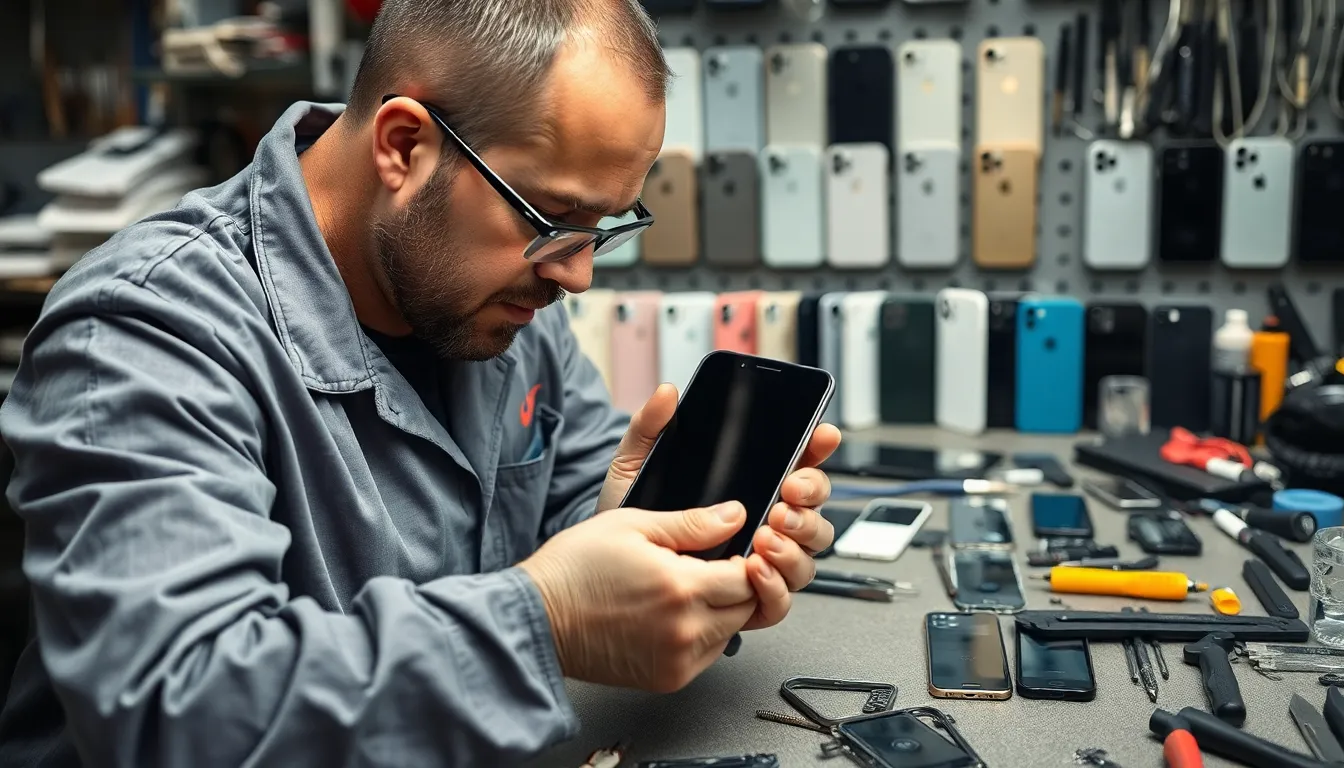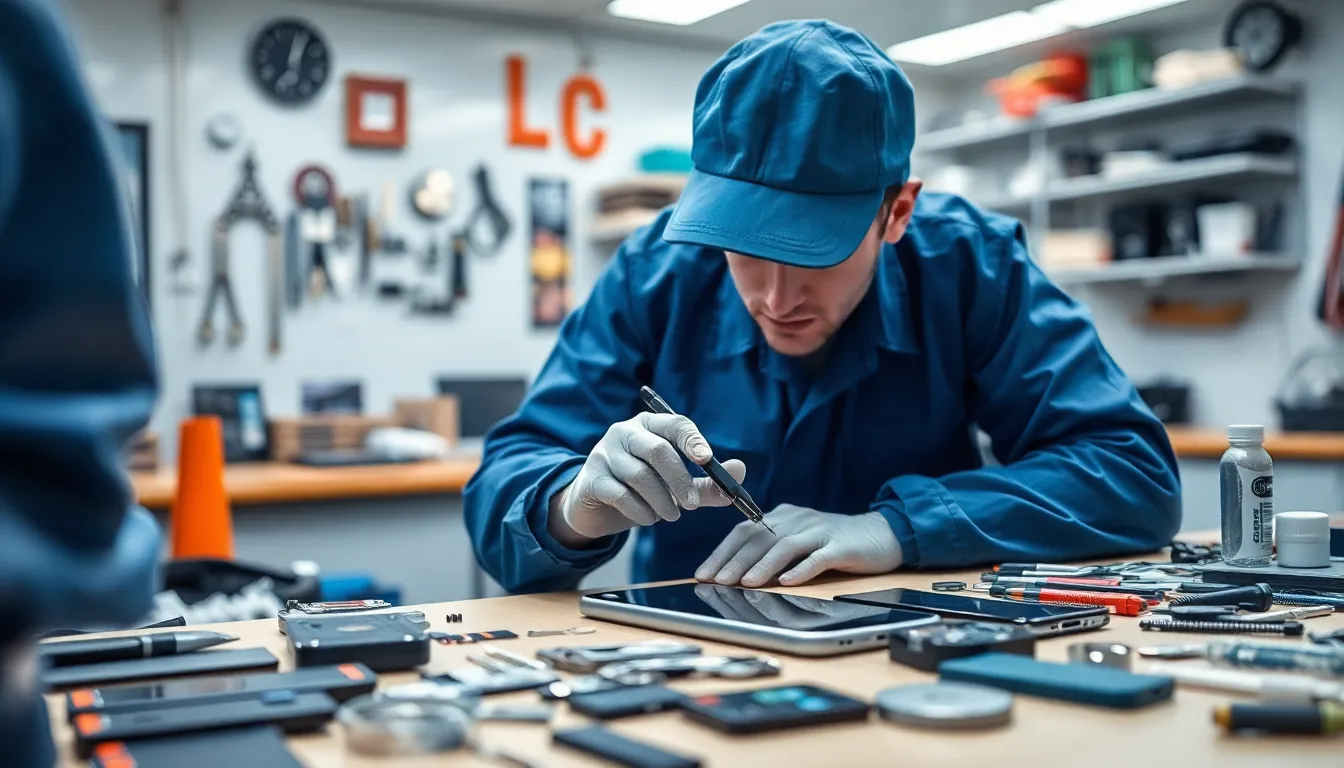Table of Contents
ToggleWhen your iPhone screen shatters, it feels like a mini heart attack. One moment you’re scrolling through memes, and the next, you’re staring at a spiderweb of glass. But don’t panic! Replacing that screen doesn’t have to be a long, drawn-out drama. In fact, it can be quicker than you think—unless you’re trying to DIY it with a butter knife and a YouTube tutorial.
Understanding iPhone Screen Replacement
Replacing an iPhone screen involves several key steps that require attention. First, identifying the model of the iPhone is crucial since different models have varying screen types and replacement processes. Often, newer models like the iPhone 13 or 14 feature advanced screens that need specialized tools for replacement.
Next, deciding between professional replacement and a DIY approach impacts both the time and quality. Professional services typically complete the process within one to two hours. In a busy repair shop, that timeframe might vary, but most technicians finish quickly.
DIY screen replacements vary significantly in duration, usually taking anywhere from one to four hours. The overall success of a DIY repair hinges on the individual’s skill level and familiarity with the tools. Following reliable online guides or video tutorials ensures better results.
Another critical aspect is the cost associated with screen replacement. Typically, professional replacement costs between $150 to $300, varying by location and service provider. DIY replacement kits range from $50 to $150, depending on the quality of materials included. Careful comparison of both options helps in making an informed decision.
Additionally, considering warranty implications is essential. Unauthorized repairs might void the manufacturer warranty, so understanding terms beforehand prevents future issues. Choosing an authorized service provides peace of mind, knowing the repair adheres to quality standards.
Most importantly, maintaining the device post-repair involves proper care. Using screen protectors and cases can significantly reduce risks of future damage. Regularly cleaning the screen with appropriate materials ensures longevity.
Factors Influencing Replacement Time



Replacement time for an iPhone screen varies based on several factors. Understanding these factors allows for better expectations regarding repair duration.
Type of Damage
The extent of the damage significantly impacts replacement time. Minor cracks might not require full screen replacement and could lead to quicker fixes. In contrast, severe damage may involve additional steps, such as replacing the LCD. Comprehensive assessments determine the necessary repairs, making the process shorter or longer depending on the severity of the damage.
Model of iPhone
Different iPhone models feature varying screen designs. Replacement for older models often involves simpler procedures, while newer models may include additional components like Face ID or 3D Touch that complicate the repair. Technicians often require extra time for models with integrated parts. Recognizing the model ensures proper preparation and accurate estimation for replacement time.
Availability of Parts
Availability of screen replacement parts affects overall repair time. Popular models typically have parts readily available, allowing for quicker service. When parts are backordered or less common, delays ensue, extending the repair duration. Identifying local suppliers or service options can mitigate these delays, ensuring smoother and faster replacements.
Professional vs. DIY Replacement
Choosing between professional and DIY screen replacement often depends on factors like skill level and budget. Each method has its merits and challenges.
Advantages of Professional Services
Expert technicians typically provide swift repairs. The standard turnaround time usually ranges from one to two hours. Professionals also use high-quality parts, ensuring the replacement meets manufacturer standards. Warranty coverage is another significant benefit; professional repairs often come with guarantees. Additionally, access to specialized tools can lead to a more efficient repair process. Peace of mind stems from knowing a qualified individual handles the replacement, minimizing the risk of further damage.
Challenges of DIY Replacement
DIY screen replacement may seem appealing due to lower costs, but difficulties can arise. Repair time often spans from one to four hours, varying with the individual’s experience. Inaccurate disassembly can lead to additional issues, such as damaged internal components. Finding the right tools and parts can also prove challenging, especially for less common iPhone models. Furthermore, limited warranty protection exists for unauthorized repairs, which risks voiding the manufacturer’s coverage. Uncertainties about the final outcome often add pressure, making the process more stressful.
Typical Timeframes for Different Models
Replacing an iPhone screen varies significantly across different models. Older models like the iPhone 6 and 7 typically require approximately one hour for professional replacement. Newer devices such as the iPhone 11 and 12 often take around 1.5 hours due to their intricate designs.
Models like the iPhone 13 and above generally require up to two hours for a professional repair. These devices feature components that are densely packed, further complicating the replacement process.
DIY replacements present different timelines. For instance, those skilled in repair may take one to two hours on older models. In contrast, newer models could take four or more hours, especially for individuals lacking experience.
Part availability plays a role in timing as well. Popular models generally have parts readily accessible, aiding in a quick repair process. Less common models might face delays due to backordered parts, extending the overall timeframe.
It’s crucial to consider how damage type affects replacement speed. Simple cracks may not impede the repair time significantly, while more severe damage necessitating additional component replacements will elongate the process.
Ultimately, understanding these timeframes can set realistic expectations for both DIY enthusiasts and those opting for professional services. Prioritizing model-specific knowledge facilitates informed decisions about screen replacement timing and procedures.







